Clouds and Convective Self-Aggregation in a Multimodel Ensemble of Radiative-Convective Equilibrium Simulations
- PMID: 33042391
- PMCID: PMC7539986
- DOI: 10.1029/2020MS002138
Clouds and Convective Self-Aggregation in a Multimodel Ensemble of Radiative-Convective Equilibrium Simulations
Abstract
The Radiative-Convective Equilibrium Model Intercomparison Project (RCEMIP) is an intercomparison of multiple types of numerical models configured in radiative-convective equilibrium (RCE). RCE is an idealization of the tropical atmosphere that has long been used to study basic questions in climate science. Here, we employ RCE to investigate the role that clouds and convective activity play in determining cloud feedbacks, climate sensitivity, the state of convective aggregation, and the equilibrium climate. RCEMIP is unique among intercomparisons in its inclusion of a wide range of model types, including atmospheric general circulation models (GCMs), single column models (SCMs), cloud-resolving models (CRMs), large eddy simulations (LES), and global cloud-resolving models (GCRMs). The first results are presented from the RCEMIP ensemble of more than 30 models. While there are large differences across the RCEMIP ensemble in the representation of mean profiles of temperature, humidity, and cloudiness, in a majority of models anvil clouds rise, warm, and decrease in area coverage in response to an increase in sea surface temperature (SST). Nearly all models exhibit self-aggregation in large domains and agree that self-aggregation acts to dry and warm the troposphere, reduce high cloudiness, and increase cooling to space. The degree of self-aggregation exhibits no clear tendency with warming. There is a wide range of climate sensitivities, but models with parameterized convection tend to have lower climate sensitivities than models with explicit convection. In models with parameterized convection, aggregated simulations have lower climate sensitivities than unaggregated simulations.
Keywords: climate sensitivity; cloud feedbacks; clouds; convection; radiative‐convective equilibrium; self‐aggregation.
©2020. The Authors.
Figures



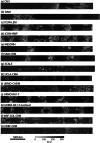








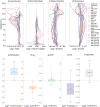
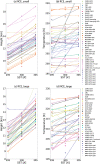
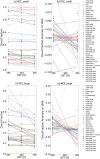

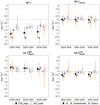
References
-
- Arnold, N. P. , & Randall, D. A. (2015). Global‐scale convective aggregation: Implications for the Madden‐Julian Oscillation. Journal of Advances in Modeling Earth Systems, 7, 1499–1518. 10.1002/2015MS000498 - DOI
-
- Bazile, E. , Couvreux, F. , Moigne, P. L. , Genthon, C. , Holtslag, A. A. M. , & Svensson, G. (2014). GABLS4: An intercomparison case to study the stable boundary layer over the Antarctic plateau. Global Energy Water Cycle Experiment News, 24(4), 4–4.
-
- Becker, T. , Hohenegger, C. , & Stevens, B. (2017). Imprint of the convective parameterization and sea‐surface temperature on large‐scale convective self‐aggregation. Journal of Advances in Modeling Earth Systems, 9, 1488–1505. 10.1002/2016MS000865 - DOI
-
- Becker, T. , & Stevens, B. (2014). Climate and climate sensitivity to changing CO2 on an idealized land planet. Journal of Advances in Modeling Earth Systems, 6, 1205–1223. 10.1002/2014MS000369 - DOI
-
- Blossey, P. N. , Bretherton, C. S. , & Wyant, M. C. (2009). Subtropical low cloud response to a warmer climate in a superparameterized climate model. Part II: Column modeling with a cloud resolving model. Journal of Advances in Modeling Earth Systems, 1, 8 10.3894/JAMES.2009.1.8 - DOI
